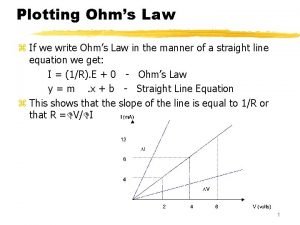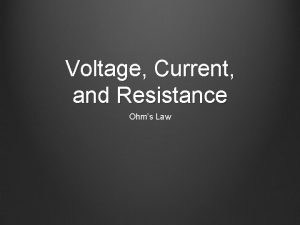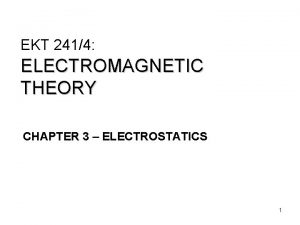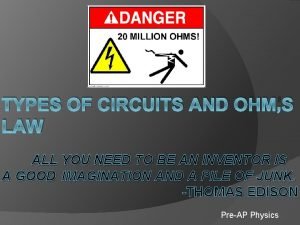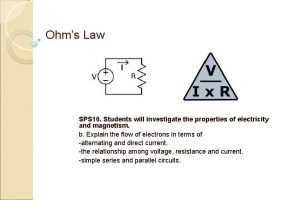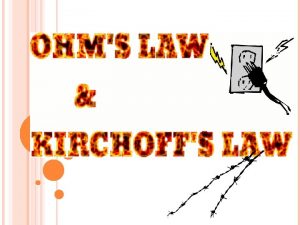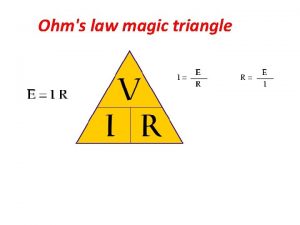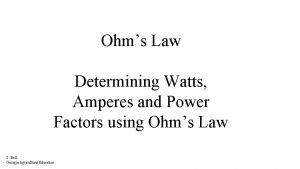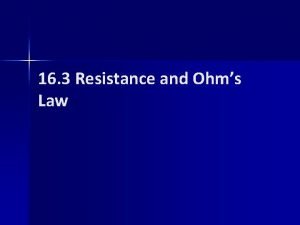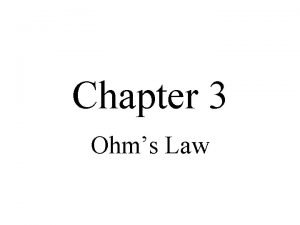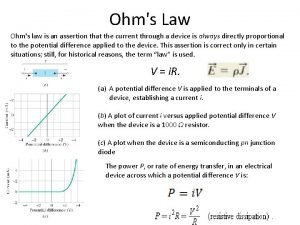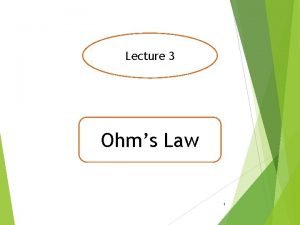Plotting Ohms Law z If we write Ohms








- Slides: 8

Plotting Ohm’s Law z If we write Ohm’s Law in the manner of a straight line equation we get: I = (1/R). E + 0 - Ohm’s Law y = m. x + b - Straight Line Equation z This shows that the slope of the line is equal to 1/R or that R = V/ I 1

Series Circuits z A circuit is any number of components joined at terminal points. Providing at least one closed path which charge can flow through. z Two components are in series if they have only one point in common that is not connected to other current carrying components. z In a series circuit, the current is the same through each series component. 2

Series Resistors z To find the total resistance of N resistors in series use: RT = R 1+ R 2 + R 3…. + RN z Once the total resistance is known, the current is: I =E/RT z and the voltage across each resistor is: V 1=IR 1, V 2 =IR 2, V 3 = IR 3 etc. z Find the total resistance, total current and the voltages V 1, V 2 and V 3. 3

Voltage Sources in Series z Voltage sources CAN be connected in series z Simply add the sources with the same polarity and subtract the sources with the opposite polarity. z ET = E 1 + E 2 + E 3 4

Kirchhoff’s Voltage Law (KVL) z KVL states that the sum of the potential rises and drops around a closed loop is zero. o. Vrises + o. Vdrops = 0 or o. Vrises = o. Vdrops z Determine the unknown voltages for these circuits using KVL. 5

Interchanging Components z The components of a series circuit can be interchanged without affecting the total resistance, current or power to each component. 6

Voltage Divider Rule z RT = R 1 + R 2 z I = /RT z V 1 = R 1 = (E/ ). R 1 = E. R 1/ z V 2 = = = z Vx = Rx. E/RT z The voltage divider rule states that the voltage across a resistor in a series circuit is equal to the value of that resistor times the total voltage across the series components divided by the total resistance of the series components. 7

Internal Resistance z Every voltage source will have some internal resistance. z The ideal voltage source has no internal resistance and an output of E volts immaterial of the load. z Practically, the internal resistance will cause the output voltage to fall as the load increases 8
